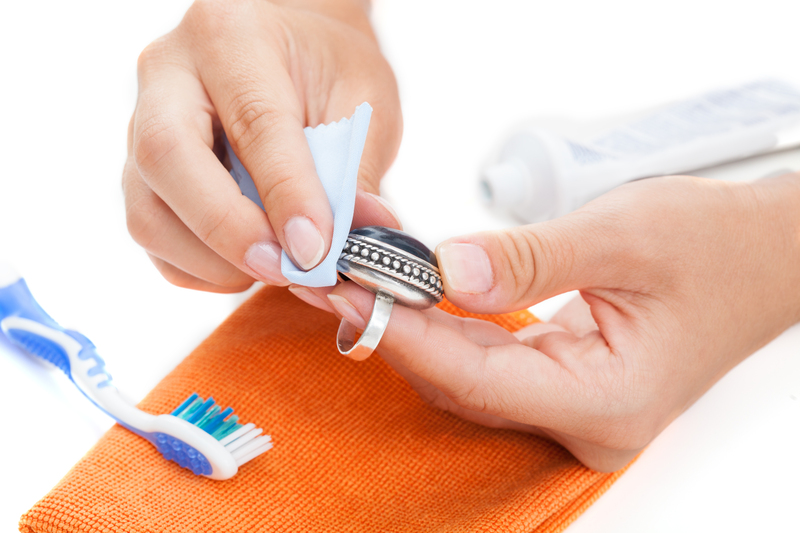Master the Art of Curtain Cleaning with These Tips
Posted on 06/10/2025
Master the Art of Curtain Cleaning with These Tips
Want fresh, beautiful window treatments year-round? Discover expert strategies for thoroughly and safely cleaning curtains at home--your comprehensive guide to curtain care!
Why Curtain Cleaning Is Essential
Every homeowner enjoys the warmth, privacy, and style that curtains bring to a living space. However, these vital decor elements quietly collect dust, allergens, and even odors over time. That's why regular curtain cleaning is crucial, both for maintaining the look of your home and promoting a healthy indoor environment.
The Risks of Dirty Curtains
- Allergen Buildup: Dust mites, pet dander, pollen, and mold spores thrive in dirty fabric.
- Lingering Odors: Cigarette smoke, kitchen smells, and general household odors are easily absorbed.
- Faded Colors: Layers of grime dull curtain fabrics, robbing your windows of their vibrancy.
- Shortened Lifespan: Dirt and accumulated debris wear down fabric fibers, encouraging rips and weakening seams.
By learning the best curtain cleaning techniques, you'll keep your home looking and feeling refreshed. Let's dive into the art of cleaning curtains expertly!

Types of Curtains and Their Cleaning Needs
Not all curtains are created equal. Understanding the fabric and construction of your window treatments helps you determine the right cleaning approach.
1. Sheer and Lace Curtains
Delicate and light, these require the gentlest care.
- Usually made of polyester, nylon, or cotton blends.
- Can easily snag or stretch if handled roughly.
- Handwashing or machine washing on a soft cycle is best.
2. Heavy Drapes and Velvet Curtains
- Thick materials trap more dust and require careful attention.
- Dry cleaning is recommended unless the care label states otherwise.
- Spot cleaning and regular dusting prolong cleanliness between deep cleans.
3. Linen or Cotton Curtains
- Durable yet prone to shrinking if washed with hot water.
- Machine washable, but always check the label first.
- Ironing while damp prevents wrinkles and keeps them looking crisp.
4. Blackout and Thermal Curtains
- Contain special linings for insulation and light blocking.
- Some are machine washable, while others require spot cleaning or dry cleaning.
- Harsh chemicals can damage their functionality.
General Curtain Cleaning Tips
Ready to master curtain cleaning at home? Stick with these foundational steps for success:
- Check the Care Label: Always read manufacturer's instructions before cleaning.
- Regular Dusting: Use a vacuum with a brush attachment or a lint roller weekly to prevent dust build-up.
- Remove Hardware: Take down curtain rods, hooks, and rings before cleaning to avoid damage.
- Spot Test First: Always test cleaning solutions on a hidden fabric section to check colorfastness.
- Air Dry Outdoors if Possible: Sunlight helps eliminate odors--just avoid direct sunlight on dyed fabrics to prevent fading.
How to Clean Curtains: Step-by-Step Methods
1. Vacuuming Curtains
Vacuuming is the simplest way to keep curtains dust-free between deep cleans.
- Attach a soft brush or upholstery nozzle to your vacuum cleaner.
- Work from top to bottom using gentle, vertical strokes.
- Edge into pleats, folds, and bottoms--these areas collect dust fast.
- For pet hair, use a lint brush or a sticky lint roller after vacuuming.
2. Steaming Curtains
Steam is effective for removing odors and killing germs without the need for washing.
- Hang curtains on their rod.
- Use a handheld fabric steamer, moving slowly from top to bottom.
- Keep the steamer a few inches from the fabric to avoid water spots.
- This method is ideal for velvet, heavy drapes, and lined curtains.
3. Machine Washing Curtains
For many cotton and machine-washable curtains, a careful wash cycle brings back freshness.
- Remove dust: Shake the curtains outside to release loose debris before washing.
- Use cold water and mild detergent.
- Skip bleach: It weakens fibers and fades prints.
- Wash on gentle: Use a delicate or hand-wash setting.
- Dry promptly: Hang while still damp to prevent wrinkles, ironing as needed.
4. Hand Washing Curtains
This is ideal for lace, sheers, or embroidered curtains.
- Fill a large basin or bathtub with cool water and a mild laundry soap.
- Submerge the curtains and gently agitate the water.
- Let soak for a few minutes, then rinse thoroughly in clean water several times.
- Do not wring! Press gently to remove water, then hang to drip dry.
5. Dry Cleaning
Some fabrics absolutely require professional care:
- Velvets, silks, brocades, and intricately pleated or lined curtains.
- If labeled "dry clean only", always follow this instruction to keep your curtains looking new.
- Between cleanings, freshen with light vacuuming or steaming.
Spot Cleaning Curtains: Quick Fixes for Small Stains
- Dab at stains with a clean, damp cloth--never rub, which spreads the stain or damages fabric.
- Mild soap and water works for most fresh spills (like coffee or juice marks).
- For greasy spots, sprinkle with cornstarch and let sit before blotting away.
- Specialty stain removers are available, but always test on a hidden seam first.
Tips to Extend Curtain Cleanliness
Regular maintenance can dramatically reduce how often you need deep curtain cleaning. Try these proactive strategies:
- Dust Windowsills and Frames: Prevent dirt from transferring onto curtains.
- Keep Windows Closed During High-Pollen Seasons: Minimizes allergen buildup.
- Groom Pets Frequently: Controls the spread of fur and dander.
- Install Air Purifiers: These reduce airborne particles that land on your curtains.
- Avoid Smoking Indoors: Curtains absorb and retain smoke odors more than you realize.
Professional Curtain Cleaning: When to Hire Experts
Sometimes, tackling curtain cleaning at home isn't enough. Consider a professional curtain cleaning service if:
- Your curtains are unusually heavy, tall, or difficult to take down.
- You see stubborn stains that resist home spot treatments.
- There's mold or heavy musty odors present (especially after water damage).
- The care label specifically recommends professional cleaning only.
Expert cleaners use specialized equipment for both dry and wet cleaning. This protects delicate fabrics, ensures a deep clean, and often includes rehanging at no additional charge. The investment can significantly extend your curtain's lifespan--saving money in the long run.
FAQs: Curtain Cleaning at Home
How often should I clean my curtains?
Aim for a thorough clean every 6 months to a year. Increase frequency if your home is prone to dust, has pets, or is near busy roads.
Is it safe to use a washing machine for all curtains?
No. Always check the care label. Many natural fibers or lined curtains can shrink, stretch, or deform if machine washed.
What's the best way to dry curtains?
Air drying is safest. Lay curtains flat or hang to dry, gently shaping them to remove wrinkles. Avoid tumble drying unless confirmed safe by the label.
Can I iron my curtains?
Yes, most cotton or linen curtains can be ironed on a medium setting. Steaming is gentler for most fabrics (including synthetics and heavy drapes).
What about blinds or shades?
While not curtains, these window treatments also collect dust. Wipe them with a damp cloth or vacuum for regular maintenance.
Eco-Friendly Curtain Cleaning Tips
If you're environmentally conscious, curtain cleaning can be both efficient and green:
- Use plant-based, biodegradable detergents for hand and machine washing.
- Opt for cold water washes--saves energy and reduces fabric wear.
- Air dry as often as possible, taking advantage of sunlight for natural disinfection (but keep dyed curtains out of direct sun to avoid fading).
- Consider professional "green" dry cleaners who avoid harsh solvents and recycle water.

Curtain Cleaning for Special Materials
Silk Curtains
Never machine wash silk! Hand-wash carefully in cold water or take to a specialist dry cleaner to avoid shrinking and color loss.
Velvet and Suede Curtains
These luxurious fabrics are best tackled with steam cleaning or professional services to maintain their plush texture.
Printed or Colorful Curtains
Cold water and gentle cleaners preserve patterns and colors. Wash separately or with like colors to avoid dye transfer.
The Final Word: Beautiful Curtains Start with Good Care
Mastering the art of curtain cleaning isn't just about maintaining appearances. It ensures a healthier environment, showcases your home at its best, and protects your investment in quality window treatments. By incorporating these tips into your household routine, you'll enjoy the fresh look, feel, and scent of clean curtains year-round!
- Follow fabric-specific instructions and avoid harsh chemicals on delicate drapes.
- Regular dusting and spot cleaning extend the time between deep cleans.
- Don't hesitate to consult professionals for specialty fabrics or stubborn stains.
- Adopt eco-friendly techniques for green living and fabric longevity.
So, whether you're deep cleaning curtains for the change of season, brightening up your living room, or safeguarding your family from allergens--let this guide pave your way to curtain cleaning mastery!





